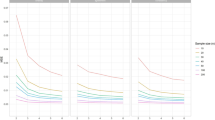Abstract
Most previously suggested methods for predicting phenytoin dosage from steady-state drug levels (Cpss)measured in the clinical setting fail to fully exploit all relevant (population) information. A Bayesian prediction method, applicable to any drug, is available. It appropriately combines all types of information. In this paper, we compare the Bayesian method as applied to phenytoin to two other prediction methods (and a baseline, nonfeedback one). Actual doses are compared to predictions in 49 patients. Each method is optimized, as far as possible, for the test data. The comparison favors the Bayesian method. Since each of the other prediction methods for phenytoin can be shown to be a theoretically suboptimal special case of the Bayesian one, the superiority of the latter may be a general phenomenon. Because the pharmacokinetic model linking steady-state phenytoin levels and dosage is so simple, a good approximation of the general Bayesian method can be implemented as a graphical device, or as a program for a programmable calculator. We present and describe both of these approximations.
Similar content being viewed by others
References
A. J. Glazko, T. Chang, J. Bouhema, W. A. Dill, J. R. Goulet, and R. A. Buchanan. Metabolic disposition of diphenylhydantoin in normal human subjects following intravenous administration.Clin. Pharmacol. Ther. 10:498–504 (1969).
H. Kutt and F. McDowell. Management of epilepsy with diphenylhydantoin.JAMA 203:969–972 (1968).
H. Kutt and F. McDowell. Pharmacodynamic and pharmacokinetic measurements of antiepileptic drugs.Clin. Pharmacol. Ther. 16:243–250 (1974).
L. Lund. Anticonvulsant effect of diphenylhydantoin relative to plasma levels.Arch. Neurol. 31:289–294 (1974).
T. M. Ludden, J. P. Allen, W. A. Valutzky, A. V. Vicuna, J. M. Nappi, S. F. Hoffman, J. E. Wallace, D. Lalka, and J. L. McNay. Individualization of phenytoin dosage regimens.Clin. Pharmacol. Ther. 21:287–293 (1977).
E. Martin, T. N. Tozer, L. B. Sheiner, and S. Riegelman. The clinical pharmacokinetics of phenytoin.J. Pharmacokin. Biopharm. 5:579–595 (1977).
P. W. Mullen. Optimal phenytoin therapy: a new technique for individualizing dosage.Clin. Pharmacol. Ther. 23:228–232 (1978).
A. Richens and A. Dunlop. Serum-phenytoin levels in management of epilepsy.Lancet II:247–248 (1975).
B. Rambeck, H. E. Boenigk, A. Dunlop, P. W. Mullen, J. Wadsworth, and A. Richens. Predicting phenytoin dose—a revised nomogram.Ther. Drug Monit. 1:325–333 (1979).
L. B. Sheiner, S. Beal, B. Rosenberg, and V. Marathe. Forecasting individual pharmacokinetics.Clin. Pharmacol. Ther. 26:294–305 (1979).
L. B. Sheiner, B. Rosenberg, and K. L. Melmon. Modelling individual pharmacokinetics for computer-aided drug dosage.Comp. Biomed. Res. 5:441–459 (1972).
S. Vozeh, A. Koelz, E. Martin, H. Magun, G. Scollo-Lavizzari, and F. Follath. Predictability of phenytoin serum levels by nomograms and clinicians.Eur. Neurol. (1980), in press.
J. Gordos, J. Schaublin, and P. Spring. Micro-determination of plasma diphenylhydantoin by gas-liquid chromatography.J. Chromatogr. 143:171–181 (1977).
A. Richens. A study of the pharmacokinetics of phenytoin (diphenylhydantoin) in epileptic patients, and the development of a nomogram for making dose increments.Epilepsia 16:627–646 (1975).
L. Lund and G. Alvan. Phenytoin dosage nomogram (letter).Lancet II:1305 (1975).
S. Beal and L. B. Sheiner.NONMEM Users Guide — Part I. Technical Report, Div. Clinical Pharmacology, University of California, San Francisco, California (1979).
D. S. Salsburg. Estimating differences in variance when comparing two methods of assay.Technometrics 17:381–382 (1975).
M. M. Reidenberg, I. Odar-Cederloff, C. Von Bahr, O. Borga, and F. Sjoqvist. Protein binding of diphenylhydantoin and desmethylimpramine in plasma from patients with poor renal function.N. Engl. J. Med. 285:264–267 (1971).
J. G. Wagner. Time to reach steady-state and prediction of steady-state concentrations for drugs obeying Michaelis-Menten elimination kinetics.J. Pharmacokin. Biopharm. 5:209–225 (1978).
Author information
Authors and Affiliations
Additional information
Work supported in part by USDHEW Grants GM 00001, GM 16496, and GM 26676, and by the Swiss National Research Foundation.
Rights and permissions
About this article
Cite this article
Vozeh, S., Muir, K.T., Sheiner, L.B. et al. Predicting individual phenytoin dosage. Journal of Pharmacokinetics and Biopharmaceutics 9, 131–146 (1981). https://doi.org/10.1007/BF01068078
Received:
Revised:
Published:
Issue Date:
DOI: https://doi.org/10.1007/BF01068078




